What Anxiety Feels Like: The Constant Companion
Anxiety can feel like having an alarm system that never turns off. Your body remains in a state of alert even when there’s no immediate danger, creating a exhausting cycle of worry, physical tension, and emotional distress. For many, anxiety becomes such a constant companion that they can’t remember what it feels like to be truly relaxed.
The Racing Mind
Living with anxiety often means your thoughts move at breakneck speed, jumping from one worry to another. You might find yourself creating elaborate scenarios of everything that could go wrong, unable to stop the cascade of “what ifs.” This mental hyperactivity can be exhausting, leaving you feeling drained even when you haven’t done anything physically demanding.
The worry often feels disproportionate to the actual situation. You might intellectually understand that your concerns are unlikely to materialize, but this knowledge doesn’t quiet the anxious voice in your head. It’s like having a smoke alarm that goes off when you light a candle – the response doesn’t match the actual level of threat.
Physical Manifestations
Anxiety isn’t just in your head – it lives in your entire body. Common physical sensations include:
- A tight chest or feeling like you can’t get enough air
- Heart palpitations or feeling like your heart is racing
- Sweaty palms and trembling hands
- Stomach churning or digestive issues
- Muscle tension, especially in the neck, shoulders, and jaw
- Headaches from constant tension
- Feeling lightheaded or dizzy
- Restlessness – an inability to sit still
Emotional Turbulence
Beyond worry, anxiety brings a complex mix of emotions. There’s often frustration at not being able to control your reactions, shame about struggling with things others seem to handle easily, and exhaustion from constantly battling your own nervous system. Many people with anxiety also experience irritability, as being on edge all the time wears down emotional reserves.
How to Know If You Have an Anxiety Disorder
While everyone experiences anxiety sometimes, an anxiety disorder involves persistent, excessive worry that interferes with daily life. Here are signs that your anxiety might benefit from professional support:
Generalized Anxiety Disorder (GAD)
- Excessive worry about many different things for at least six months
- Difficulty controlling the worry
- Physical symptoms like restlessness, fatigue, difficulty concentrating
- The anxiety significantly impacts work, relationships, or daily functioning
Social Anxiety
- Intense fear of social situations or being judged by others
- Avoiding social gatherings, speaking up in meetings, or everyday interactions
- Physical symptoms like blushing, sweating, or trembling in social situations
- Fear that others will notice your anxiety and judge you for it
Panic Disorder
- Recurrent, unexpected panic attacks
- Persistent worry about having another panic attack
- Avoiding places or situations where panic attacks have occurred
- Physical symptoms during attacks: racing heart, sweating, trembling, feeling like you’re dying
Specific Phobias
- Intense fear of specific objects or situations (flying, heights, animals, etc.)
- The fear is out of proportion to the actual danger
- Going to great lengths to avoid the feared object or situation
- Immediate anxiety response when encountering the trigger
What Feels Wrong: When Worry Takes Over
Anxiety can make the world feel like a dangerous place where catastrophe lurks around every corner. Simple decisions become agonizing as you try to anticipate every possible negative outcome. The constant state of alert exhausts your body and mind, yet sleep often remains elusive as worries spin through your head at night.
Relationships may suffer as anxiety creates barriers to connection. You might cancel plans due to anxious feelings, struggle to be present with loved ones, or seek constant reassurance that becomes draining for both you and others. The fear of judgment can make authentic connection feel impossible.
Work or school performance may decline despite (or because of) perfectionist tendencies. The fear of making mistakes can lead to procrastination, while the pressure to be perfect creates overwhelming stress. Many people with anxiety find themselves caught between working themselves to exhaustion and avoiding tasks altogether.
Perhaps most frustrating is the meta-anxiety – anxiety about having anxiety. You might worry about when the next wave will hit, whether others notice your symptoms, or if you’ll ever feel “normal” again. This creates a self-perpetuating cycle that can feel impossible to break.
How Anxiety Is Treated: Evidence-Based Approaches
Effective anxiety treatment addresses both the immediate symptoms and the underlying patterns that maintain anxiety over time. Modern approaches combine neuroscience-based interventions with holistic support for lasting change.
Brainspotting: Calming the Anxious Brain
Brainspotting can be remarkably effective for anxiety, particularly when anxiety stems from past experiences or trauma. By accessing the subcortical brain where anxiety responses originate, Brainspotting helps calm overactive alarm systems and build capacity for emotional regulation.
Many clients find that Brainspotting helps them understand the roots of their anxiety in a felt sense way, leading to deeper and more lasting relief than cognitive approaches alone. The therapy can help your nervous system learn that you’re safe in the present moment.
Neurofeedback and Brain Mapping
QEEG brain mapping can reveal patterns of brain activity associated with anxiety, such as excessive fast-wave activity or imbalances between different brain regions. This objective data helps create targeted treatment plans.
Neurofeedback training teaches your brain to achieve calmer, more balanced states. Through repeated sessions, your brain learns to maintain these healthier patterns, reducing anxiety symptoms at their neurological source. Many people experience this as finally having an “off switch” for their anxiety.
EMDR for Anxiety
When anxiety is rooted in past experiences, EMDR can help reprocess these memories so they no longer trigger anxiety responses. This is particularly helpful for anxiety that developed after specific events or during difficult periods of life.
Mindfulness and Meditation
Mindfulness and meditation practices teach you to observe anxious thoughts and sensations without being swept away by them. Regular practice can actually change brain structure, strengthening areas associated with emotional regulation and weakening anxiety pathways.
These practices offer tools you can use anywhere, anytime anxiety arises. Learning to ground yourself in the present moment provides an anchor when anxiety tries to pull you into future worries.
Somatic Approaches
Since anxiety lives in the body, somatic therapies teach you to work with physical sensations directly. You’ll learn to recognize early signs of anxiety in your body and use techniques like breathing, movement, or progressive relaxation to shift your nervous system state.
Jungian Therapy for Anxiety
Jungian therapy explores how anxiety might be pointing to unlived aspects of yourself or calling for growth. This depth approach can help you understand anxiety as meaningful rather than simply pathological, leading to profound personal transformation.
Emotional Transformation Therapy (ETT)
ETT uses precise wavelengths of light to help regulate emotional states and process anxiety-provoking material. This innovative approach can create rapid shifts in anxiety patterns by working with the brain’s natural light-processing mechanisms.
Holistic Support
Nutritional support can play a crucial role in anxiety management. Certain nutrients support neurotransmitter production and nervous system health, while dietary changes can stabilize blood sugar and reduce physical anxiety symptoms.
Parts Work for Anxiety
Parts-based therapy helps you understand different aspects of yourself – including the anxious parts. Rather than trying to eliminate anxiety, this approach helps you develop a compassionate relationship with anxious parts and understand what they’re trying to protect you from.
Living Beyond Anxiety
Recovery from anxiety doesn’t mean never feeling anxious again – some anxiety is a normal and even helpful part of life. Instead, recovery means anxiety no longer controls your choices or limits your life. You develop tools to work with anxiety when it arises and confidence in your ability to handle life’s uncertainties.
Many people find that working through anxiety leads to unexpected gifts: increased self-awareness, deeper compassion for others who struggle, and a greater appreciation for moments of peace. The journey through anxiety can lead to a more authentic, grounded way of being in the world.
Bibliography
- Barlow, D. H. (2004). Anxiety and Its Disorders: The Nature and Treatment of Anxiety and Panic (2nd ed.). The Guilford Press.
- Wilson, R. (2016). Don’t Panic: Taking Control of Anxiety Attacks (3rd ed.). Harper Perennial.
- Forsyth, J. P., & Eifert, G. H. (2016). The Mindfulness and Acceptance Workbook for Anxiety: A Guide to Breaking Free from Anxiety, Phobias, and Worry Using Acceptance and Commitment Therapy (2nd ed.). New Harbinger Publications.
- Grand, D. (2013). Brainspotting: The Revolutionary New Therapy for Rapid and Effective Change. Sounds True.
- Siegel, D. J. (2010). Mindsight: The New Science of Personal Transformation. Bantam Books.
- Van der Kolk, B. (2014). The Body Keeps the Score: Brain, Mind, and Body in the Healing of Trauma. Penguin Books.
- Kabat-Zinn, J. (2013). Full Catastrophe Living: Using the Wisdom of Your Body and Mind to Face Stress, Pain, and Illness. Bantam Books.
- Hanson, R. (2013). Hardwiring Happiness: The New Brain Science of Contentment, Calm, and Confidence. Harmony Books.
- LeDoux, J. (2015). Anxious: Using the Brain to Understand and Treat Fear and Anxiety. Viking.
- Craske, M. G. (2017). Cognitive-Behavioral Therapy (2nd ed.). American Psychological Association.
- Carbonell, D. (2016). The Worry Trick: How Your Brain Tricks You into Expecting the Worst and What You Can Do About It. New Harbinger Publications.
- Bourne, E. J. (2015). The Anxiety and Phobia Workbook (6th ed.). New Harbinger Publications.
- Schwartz, J. M., & Gladding, R. (2011). You Are Not Your Brain: The 4-Step Solution for Changing Bad Habits, Ending Unhealthy Thinking, and Taking Control of Your Life. Avery.
- Williams, M., & Penman, D. (2011). Mindfulness: An Eight-Week Plan for Finding Peace in a Frantic World. Rodale Books.
- Damasio, A. (2003). Looking for Spinoza: Joy, Sorrow, and the Feeling Brain. Harcourt.
Tags: anxiety disorders, generalized anxiety, social anxiety, panic attacks, neurofeedback, brainspotting therapy, mindfulness for anxiety, somatic therapy, EMDR, anxiety treatment Birmingham, holistic anxiety relief, parts work therapy, ETT therapy, Jungian psychology, anxiety management
Understanding Depression: When the World Loses Its Color
What Depression Feels Like: The Weight of Emptiness
Depression is often described as a heavy blanket that muffles all sensation, but this only captures part of the experience. For many, depression feels like being trapped behind thick glass, able to see life happening but unable to truly participate or feel connected to it. The world continues to turn, but you’ve somehow stepped outside of its rhythm.
The Emotional Void
Perhaps the most disturbing aspect of depression is not sadness but the absence of feeling altogether. Where there once was joy, anger, excitement, or even sadness, there’s now a gray emptiness. Activities that once brought pleasure – spending time with loved ones, engaging in hobbies, enjoying nature – now feel hollow and pointless.
This emotional numbness can be more frightening than pain. At least pain confirms you’re alive and capable of feeling. The void of depression can make you question your very existence, wondering if you’ll ever feel truly alive again.
The Physical Burden
Depression lives in the body as much as the mind. Common physical experiences include:
- Feeling like your limbs are made of lead
- Exhaustion that sleep doesn’t relieve
- Moving through molasses – everything takes enormous effort
- Aches and pains with no clear physical cause
- Changes in appetite – either losing interest in food or eating without satisfaction
- Sleep disturbances – too much, too little, or unrefreshing sleep
- Feeling cold or unable to get warm
- Digestive issues and stomach problems
The Cognitive Fog
Depression clouds thinking in profound ways. Concentration becomes nearly impossible as thoughts move slowly, like trying to think through thick fog. Simple decisions – what to wear, what to eat – can feel overwhelming. Memory problems are common, with recent events feeling distant and unclear.
The inner critic becomes louder and more vicious during depression. Thoughts spiral into self-blame, worthlessness, and hopelessness. Your mind becomes expert at finding evidence for why things will never improve, filtering out any information that contradicts this bleak narrative.
How to Know If You Have Depression
While everyone feels down sometimes, clinical depression involves persistent symptoms that significantly impact daily functioning. Key indicators include:
Major Depressive Disorder
- Depressed mood most of the day, nearly every day
- Markedly diminished interest or pleasure in activities
- Significant weight loss or gain
- Insomnia or hypersomnia
- Psychomotor agitation or retardation
- Fatigue or loss of energy
- Feelings of worthlessness or excessive guilt
- Diminished ability to think or concentrate
- Recurrent thoughts of death or suicide
Persistent Depressive Disorder (Dysthymia)
- Chronic low mood for at least two years
- Symptoms are less severe but more enduring
- May feel like this is “just who you are”
- Often begins in childhood or adolescence
- Can be punctuated by episodes of major depression
Seasonal Affective Disorder
- Depression that follows seasonal patterns
- Typically worse in fall and winter
- Symptoms include oversleeping, weight gain, carbohydrate cravings
- Feeling like you’re “hibernating”
Atypical Depression
- Mood reactivity – mood brightens in response to positive events
- Increased appetite or weight gain
- Excessive sleep
- Heavy feeling in arms or legs
- Sensitivity to interpersonal rejection
What Feels Wrong: Life Through Depression’s Lens
Depression distorts perception in fundamental ways. Time feels different – days blur together while minutes can feel like hours. The future appears either blank or filled with inevitable suffering. The past is rewritten through depression’s lens, with happy memories feeling false or irrelevant.
Relationships suffer as depression creates distance. You might withdraw from loved ones, convinced you’re a burden or that they’re better off without you. The energy required for social interaction feels impossible to muster. Even when surrounded by people who care, the isolation feels impenetrable.
Self-care becomes a monumental task. Showering, brushing teeth, or changing clothes can feel pointless and exhausting. The visible signs of self-neglect then feed into shame and self-loathing, creating another downward spiral.
Work or school may become impossible to manage. The cognitive fog makes concentration difficult, while the lack of motivation makes starting tasks feel insurmountable. Many people with depression force themselves to maintain a facade of functioning, exhausting their remaining energy reserves.
How Depression Is Treated: Pathways Back to Life
Effective depression treatment recognizes that depression affects the whole person – body, mind, and spirit. Modern approaches combine multiple modalities to address depression’s complex nature.
Brainspotting: Accessing Hidden Roots
Brainspotting can be particularly effective for depression that has roots in trauma or unprocessed experiences. By accessing the subcortical brain, Brainspotting helps release frozen emotional states and reconnect you with your body’s natural vitality.
Many people find that Brainspotting helps them understand their depression in a new way – not as a character flaw but as a protective response that’s outlived its usefulness. This shift in perspective can be profoundly healing.
Brain Mapping and Neurofeedback
QEEG brain mapping often reveals specific patterns associated with depression, such as frontal lobe asymmetry or excessive slow-wave activity. This objective data helps create targeted interventions.
Neurofeedback training can help rebalance brain activity, often leading to improved mood, energy, and cognitive function. Many people describe feeling like “the lights came back on” as their brain learns healthier patterns.
EMDR for Depression
When depression is linked to past trauma or negative life experiences, EMDR can help reprocess these memories. By reducing the emotional charge of past events, EMDR can free you from patterns that maintain depression.
Jungian Depth Work
Jungian therapy views depression as a call from the soul for transformation. Rather than simply trying to eliminate symptoms, this approach explores what depression might be asking of you – what needs to die so something new can be born.
Working with dreams, symbols, and the unconscious can reveal hidden resources and point toward authentic life paths that have been blocked or ignored.
Somatic Approaches
Since depression profoundly affects the body, somatic therapies help reconnect you with physical vitality. Through gentle movement, breathwork, and body awareness, you can begin to thaw the frozen state of depression.
These approaches recognize that sometimes we need to move energy through the body before we can process it cognitively. The body often knows how to heal when given the right support.
Emotional Transformation Therapy
ETT uses specific light wavelengths to influence mood and emotional processing. This innovative approach can create rapid shifts in depressive states by working with the brain’s natural light-sensitive mechanisms.
Parts Work
Parts-based therapy helps you understand depression as a protective part rather than your whole identity. By developing relationships with different aspects of yourself, you can understand what the depressed part is trying to protect you from and find healthier ways to meet those needs.
Holistic Support
Nutritional interventions can significantly impact depression. Addressing deficiencies in key nutrients, supporting gut health, and stabilizing blood sugar can provide the physical foundation for emotional healing.
Lifespan Integration
Lifespan Integration helps your nervous system update to present time, recognizing that past difficulties are over. This gentle approach can help lift the timeless quality of depression and reconnect you with life’s natural flow.
Mindfulness and Meditation
Mindfulness practices teach you to observe depressive thoughts and feelings without being consumed by them. Regular practice can create space between you and depression, allowing for new possibilities to emerge.
Finding Your Way Back
Recovery from depression is rarely linear. There will be setbacks and dark days even as overall trajectory improves. What matters is developing a toolkit of strategies and support systems that can help you navigate difficult periods.
Many people find that working through depression leads to a deeper appreciation for life’s simple pleasures and a more authentic relationship with themselves. The journey through darkness can paradoxically lead to a greater capacity for joy and meaning.
Recovery doesn’t mean never feeling sad or struggling again. It means developing resilience, self-compassion, and trust in your ability to move through difficult emotions. It means choosing life even when it’s hard, and finding meaning even in struggle.
Bibliography
- Solomon, A. (2001). The Noonday Demon: An Atlas of Depression. Scribner.
- Williams, M., Teasdale, J., Segal, Z., & Kabat-Zinn, J. (2007). The Mindful Way Through Depression: Freeing Yourself from Chronic Unhappiness. The Guilford Press.
- Rottenberg, J. (2014). The Depths: The Evolutionary Origins of the Depression Epidemic. Basic Books.

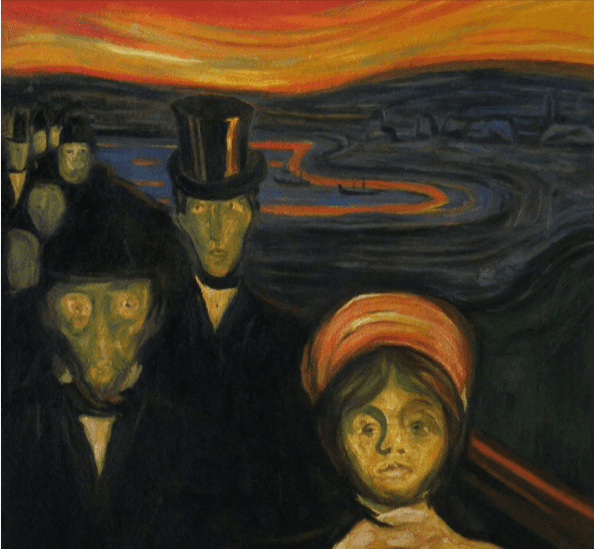


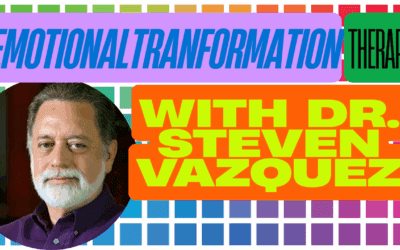
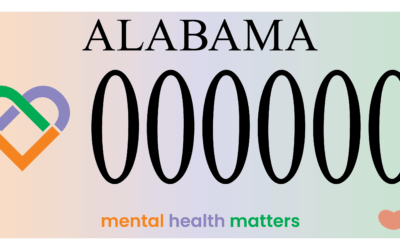


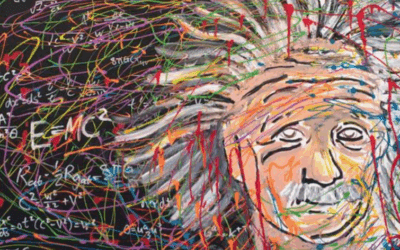



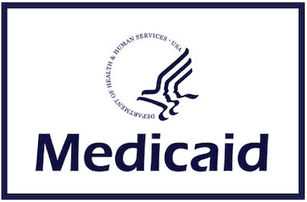


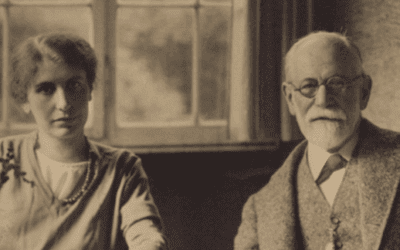







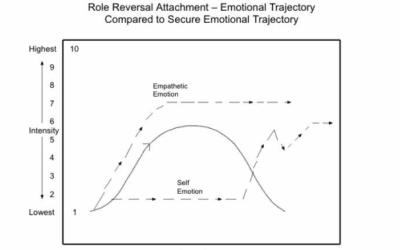


0 Comments